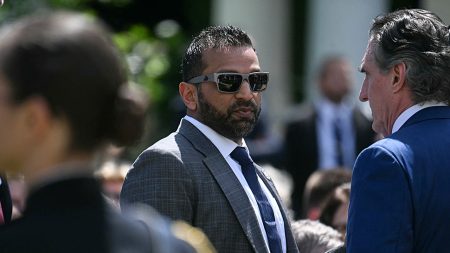Growing Western Concerns Over Russian Surveillance Flights Despite Decline in Sabotage Activities
Intelligence Officials Track Shifting Patterns in Russian Operations as Aerial Monitoring Intensifies
In recent months, military and intelligence officials across the United States and Europe have observed a notable shift in Russian intelligence activities, with a marked increase in surveillance flights along NATO borders raising significant security concerns. This aerial escalation comes at a time when more traditional acts of Russian sabotage in Western countries appear to be declining, creating what security experts describe as a complex and evolving intelligence landscape that demands careful monitoring and strategic response.
The intensification of Russian surveillance flights represents what many defense analysts view as a tactical pivot in Moscow’s intelligence-gathering operations. According to senior defense officials who spoke on condition of anonymity due to the sensitive nature of the intelligence, Russian aircraft have been documented conducting increasingly sophisticated reconnaissance missions along the borders of multiple NATO member states. “We’re seeing a level of aerial surveillance activity that exceeds what we observed even during the heightened tensions of the past few years,” noted one European defense official familiar with NATO’s air defense monitoring systems. These flights, often involving specialized aircraft equipped with advanced electronic intelligence-gathering capabilities, appear designed to test Western air defense responses while collecting critical data on military installations and communication networks throughout the alliance’s eastern flank. The frequency of these missions has increased by approximately 35% compared to similar periods in previous years, according to data compiled by Western military analysts tracking Russian air movements.
The surveillance escalation emerges against a backdrop of what intelligence officials characterize as a significant reduction in Russian sabotage operations across Western nations. Following a period of high-profile incidents – including suspected sabotage attempts against critical infrastructure in countries like Germany, France, and the Nordic states – security services have documented what appears to be a strategic recalibration by Russian intelligence agencies. “The traditional playbook of physical sabotage operations seems to have been temporarily shelved in favor of less provocative intelligence collection methods,” explained Dr. Catherine Reynolds, a senior fellow at the Center for Strategic and International Studies who specializes in Russian intelligence operations. This decline in sabotage activities does not necessarily indicate a softening in Russia’s posture toward the West, but rather suggests a tactical shift toward methods that carry less risk of direct attribution and international backlash. Security services across multiple Western nations have reported approximately a 40% decrease in suspected Russian-linked sabotage attempts compared to the previous eighteen-month period, though officials caution this trend could reverse quickly depending on geopolitical developments.
Technological Sophistication and Strategic Implications of Increased Aerial Surveillance
The technological sophistication of these Russian surveillance flights has particularly alarmed Western military planners, who note significant advancements in the capabilities deployed. The aircraft involved in these operations frequently employ state-of-the-art signals intelligence (SIGINT) systems capable of intercepting and analyzing electronic communications across vast geographic areas. “What we’re witnessing is not just an increase in quantity but a substantial leap in quality,” said Brigadier General Marcus Thornton (Ret.), former NATO liaison for electronic warfare coordination. “These platforms can potentially capture encrypted communications, map radar systems, and compile detailed electronic order of battle information that would be invaluable in any future conflict scenario.” Defense analysts have identified multiple variants of modified Russian aircraft conducting these missions, including specially equipped Tu-214R reconnaissance planes and Il-20M electronic intelligence aircraft, both representing the cutting edge of Russia’s aerial surveillance capabilities. These platforms typically operate just outside territorial airspace, carefully navigating international boundaries while maximizing their collection range – a calculated approach that remains technically legal under international law while testing the limits of accepted practice.
The strategic implications of this shift extend beyond immediate security concerns and reflect broader geopolitical calculations by Moscow, according to diplomatic and military sources. The timing of this operational pivot coincides with several significant developments in the international security environment, including NATO’s continued strengthening of its eastern defensive posture and ongoing Western military support to Ukraine. “Russia appears to be recalibrating its intelligence collection priorities to focus on gathering precise information about NATO’s enhanced forward presence and defense capabilities,” observed Dr. Elena Markova, professor of international security studies at Georgetown University. This intelligence-gathering effort likely serves multiple strategic objectives for the Kremlin, including informing military planning, supporting information operations, and potentially identifying vulnerabilities in Western defense systems. The surveillance flights may also serve a psychological purpose, demonstrating Russia’s persistent presence and capabilities along NATO’s borders without crossing thresholds that might trigger more severe diplomatic responses or military confrontations.
The Western response to this evolving challenge has been multifaceted, combining diplomatic protests, enhanced counter-intelligence measures, and increased military readiness. NATO has significantly increased its air policing missions, with allied fighter aircraft regularly scrambling to intercept and monitor Russian surveillance platforms approaching alliance airspace. “We’ve established a robust and responsive system to track these flights and ensure they remain under constant observation,” explained Air Marshal Sir Richard Parker of the Royal Air Force, who has coordinated multinational air defense efforts. Diplomatically, several European nations have summoned Russian ambassadors to formally protest what they characterize as provocative aerial activities, though these diplomatic interventions have produced limited tangible results. The United States has simultaneously expanded intelligence-sharing mechanisms with European partners specifically focused on Russian aerial surveillance capabilities, establishing dedicated working groups to analyze flight patterns and collection objectives. “This represents a whole-of-alliance approach to a challenge that affects all NATO members,” stated a senior State Department official involved in coordinating the diplomatic response.
Long-term Security Implications and Adaptive Response Strategies
Security experts emphasize that this apparent shift in Russian intelligence tactics requires a sustained and adaptive Western response strategy that acknowledges both current patterns and potential future developments. “The reduction in sabotage operations should not be misinterpreted as a fundamental change in Russia’s strategic posture toward the West,” cautioned James Blackwell, former intelligence analyst and author of “Moscow’s Invisible Hand: Russian Intelligence Operations in the 21st Century.” “Rather, it likely represents a tactical reallocation of resources and a calculation about which methods currently provide the optimal risk-reward ratio.” The intelligence community remains particularly vigilant about the possibility that information gathered through these surveillance flights could enable more precisely targeted and sophisticated operations in the future, potentially including cyber attacks against critical infrastructure or influence operations designed to exploit identified vulnerabilities. This concern has prompted increased investment in counter-surveillance technologies and electronic warfare capabilities across multiple NATO member states, with particular emphasis on systems capable of disrupting or degrading the effectiveness of Russian intelligence collection platforms.
Looking ahead, military planners and policy experts anticipate that this pattern of intensified aerial surveillance combined with reduced physical sabotage may represent the new normal in Russia’s intelligence operations against Western interests. The approach offers Moscow significant intelligence benefits while minimizing diplomatic costs, creating what security professionals describe as a sustainable model for persistent information gathering. Western defense establishments have consequently begun implementing longer-term adaptations, including enhanced training for air defense personnel, investments in advanced radar systems capable of detecting sophisticated surveillance aircraft at greater distances, and the development of comprehensive electronic protection measures for sensitive military communications and installations. “We’re not just responding to today’s challenge but preparing for an extended competition in the intelligence domain,” explained Lieutenant General Sandra Hayes, Deputy Commander for Intelligence at U.S. European Command. As this dynamic security environment continues to evolve, the relationship between Russian surveillance flights and other intelligence activities will remain a critical focus for Western security services, requiring sustained vigilance, technological innovation, and strategic patience in what many experts now characterize as a new era of intelligence competition between Russia and the West.









